动态
-
Jason 在版块 中国文化 中发起了话题 Chinese New Year full vocabulary list 5个月前
For this list we’ve grouped all the vocabulary associated with Chinese New Year into the following four categories:
- Special events and dates
- Chinese New Year greetings
- Chinese New Year objects and activities
- Chinese New Year food
So let’s start with…
1. Special events and dates
Here you’ll see the important events and dates during t…[阅读更多] -
Jason 在版块 中国文化 中发起了话题 Chinese Kites 5个月前
When we talk about the skies above China, we are often referring to topics like pollution or busy airlines. But beneath the clouds there is a Chinese art form that has glided through history. This ancient relic brings the colors and patterns of the ancient dynasties to the city skies of modern China and the world. It’s the famous Chinese kite and…[阅读更多]
-
Jason 在版块 中国文化 中发起了话题 Chinese Knots 5个月前
Can knots be a form of art? It is in China. There is a long history of using knots for decoration on clothing or to hang from the ceiling or on a wall. Skilled knot artists weave complex knots that you might see sold as souvenirs that you can take back with you. They have a long history and a symbolic meaning even today.
What Is a Chinese K…[阅读更多] -
Jason 在版块 中国文化 中发起了话题 Chinese Paper Cutting 5个月前
Introduction
Paper cutting is one of the most popular decorative Chinese handicrafts. It is popular for its low cost and artistry. Rural women often make paper cuttings in their spare time when farming is not busy. As a reflection of its philosophical origins, paper cutting is as comprehensive as it is attractive. Moreover, folk paper cutting…[阅读更多] -
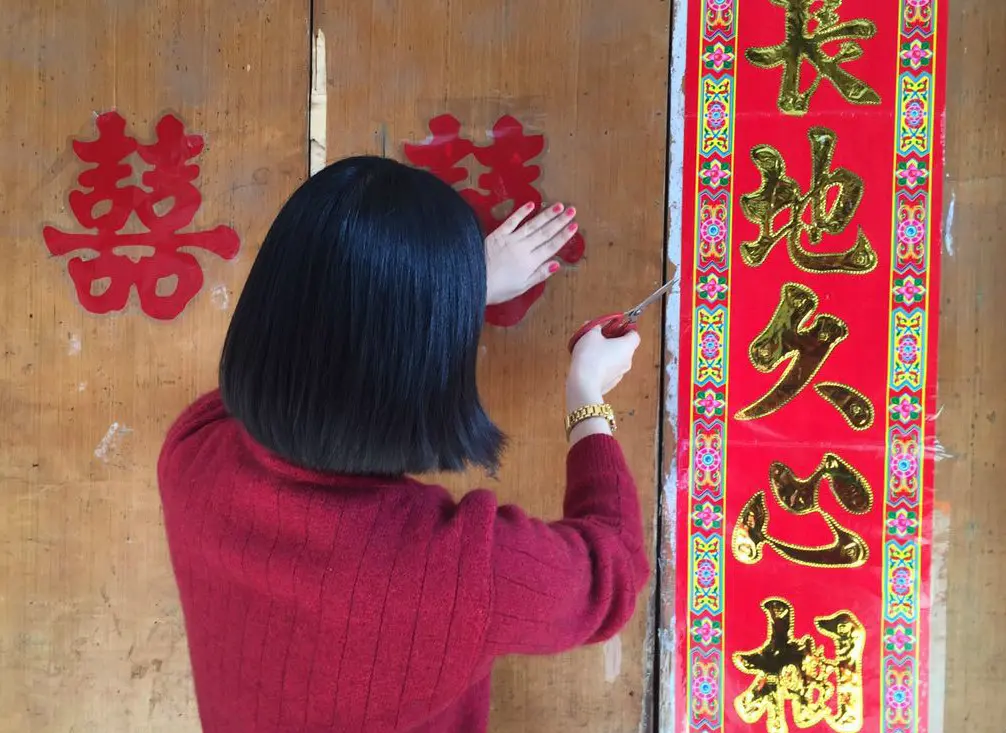
It is recorded that the origin of spring couplets can be dated back to 1,000 years ago when people hung taofu (桃符, written charms on peach wood) on doors.Legend has it that there was a huge peach tree stretching for more than 1,500 kilometers on a mountain in the ghost world. To the northeast of the tree, two guards named Shentu and Yulei gua…[阅读更多]
-
Jason 在版块 中国文化 中发起了话题 The Legend of Why Red Envelopes Are Given 5个月前
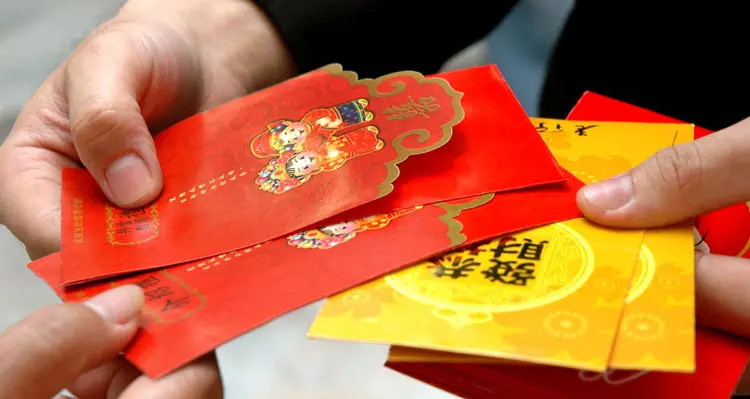 red envelopes
red envelopes
During the Chinese New Year period, the married or the elderly give red envelopes to children or unmarried juniors. A red envelope is also called yasui qian (“suppressing Sui money”).According to legend, on New Year’s Eve, besides the monster Nian, there was a demon named Sui that came out to terrify children while they were a…[阅读更多]
-
Jason 在版块 中国文化 中发起了话题 The Legend of Why New Year Is Celebrated 5个月前
Chinese New Year’s Day is called Guo Nian (过年) in Chinese, which can mean ‘celebrate (a new) year’ or ‘overcome Nian’. The character 年 (Nián) could mean a ‘year’ or ‘the monster Nian’.
In ancient times, there was a monster named Nian (年, or Nianshou 年兽) with a long head and sharp horns. It dwelled deep in the sea all year round and only showed up…[阅读更多]
-
Jason 在版块 中国文化 中发起了话题 Chinese Lion Dances 5个月前
The lion dance is a traditional Chinese dance performed on big occasions, such as the Spring Festival (Chinese New Year) for good luck, as it is believed that the lion is an auspicious animal.
- Lion Dance Meaning
- Lion Dance Costumes
- Lion Dance Styles
- Origin and History of Lion Dances
What Lion Dances Symbolize
In Chinese culture, the…[阅读更多] -
Jason 在版块 中国文化 中发起了话题 Chinese New Year Firecrackers 5个月前
It is an important custom to set off firecrackers and fireworks during the Chinese New Year period. Chinese New Year celebrations would not be complete without them.
Why Light Firecrackers on Chinese New Year?
In traditional Chinese culture, firecrackers were originally used to scare away evil spirits.As the legend goes, a monster called Nian…[阅读更多]
-
Celebrating Chinese New Year with Chinese friends can be great, but, when the cultural gap is large, it can be really easy to give the wrong gift for Chinese New Year.
Here, we’ve summarized 15 things you should not give as a Chinese New Year gift and their negative meanings in Chinese culture. Make sure that you don’t give the wrong gift. For…[阅读更多]
-
Jason 在版块 中国文化 中发起了话题 Red Envelopes/Packets (Hongbao) 5个月前
A red envelope (hongbao in Mandarin, lai see in Cantonese, and ang pow in Hokkien) is a gift of money inserted into an ornate red pocket of paper. They are given on some important occasions, such as Chinese New Year, birthdays, and weddings in China and some other Asian countries as a way to send good wishes.
The color red symbolizes energy,…[阅读更多]
-
Jason 在版块 中国文化 中发起了话题 Reunion Dinner 5个月前
If one were to choose only one day of the two-week-long Chinese New Year festival to go home to visit family, this would be it. The daytime before the reunion dinner (and immediately preceding days if the journey home is longer) see the most crowded roads, bus stations, train stations, and airports of the whole year, as everyone anxiously makes th…[阅读更多]
-
Jason 在版块 中国文化 中发起了话题 In Chinese Communities around the World 5个月前
Southeast Asian countries with a significant Chinese population celebrate Chinese New Year with similar traditions.
Singapore and Malaysia observe a 2-day holiday from January 29th to 30th in 2025.
Indonesia has a day public holiday on January 29th, 2025.
Thailand designates Chinese New Year (January 29th in 2025) as a regional public holi…[阅读更多]
-
Chinese New Year is not only celebrated in China’s mainland but also in various other regions and countries influenced by Chinese traditions and with ethnic Chinese populations. Some notable places where Chinese New Year celebrations take place include:
Hong Kong, Macau, and Taiwan: Chinese New Year is a major holiday in these regions, with…[阅读更多]
-
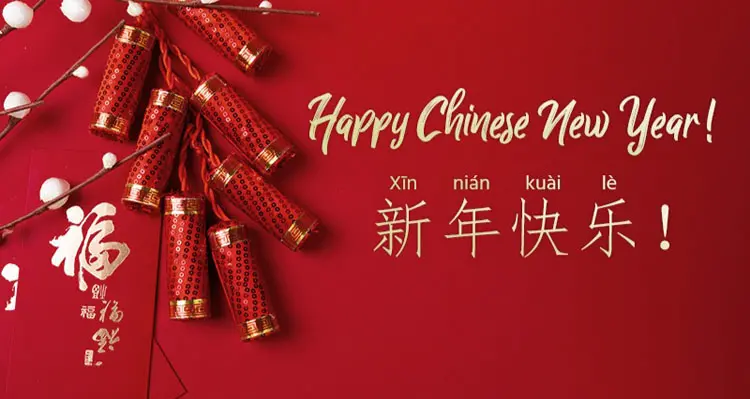
When people meet friends, relatives, colleagues, and even strangers during the festive period, they usually say “Xīnnián hǎo” (新年好), literally meaning ‘New Year Goodness’, or “Xīnnián kuàilè” (新年快乐), meaning ‘Happy Chinese New Year’.One of the most famous traditional greetings for Chinese New Year is the Cantonese kung hei fat choi, literally ‘…[阅读更多]
-
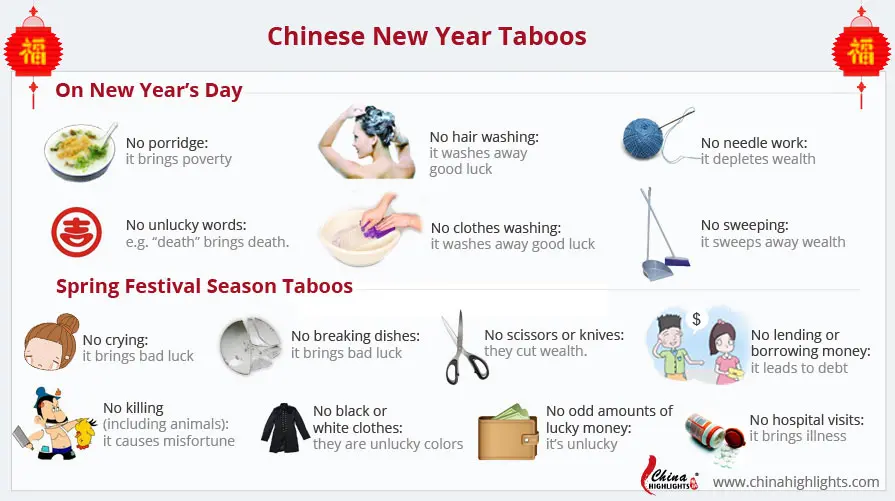
Chinese people traditionally believe that the year’s start affects the whole year, so China’s Spring Festival is a season of superstitions. It’s believed that what something looks like (color, shape), and what its name sounds like, gives it auspicious or ill-fated significance. There are many things you cannot do:- Don’t sweep up on New Year’s…
-
Jason 在版块 中国文化 中发起了话题 Chinese New Year Food 5个月前
- Fish is a must as it sounds like ‘surplus’ in Chinese and symbolizes abundance.
- Dumplings shaped like Chinese silver ingots are shared as a sign of the family unit and prosperity.
- Niángāo (glutinous rice cake) is welcome because it symbolizes a higher income or position as it sounds like ‘year high’.
Food is an important part of Chin…[阅读更多]
-
Jason 在版块 中国文化 中发起了话题 How Long Is Chinese New Year Celebrations? 5个月前
Celebrations of Chinese New Year traditionally last for 16 days, starting from Chinese New Year’s Eve to the Lantern Festival. The public holiday in 2025 is from January 28th to February 4th, lasting 8 days.
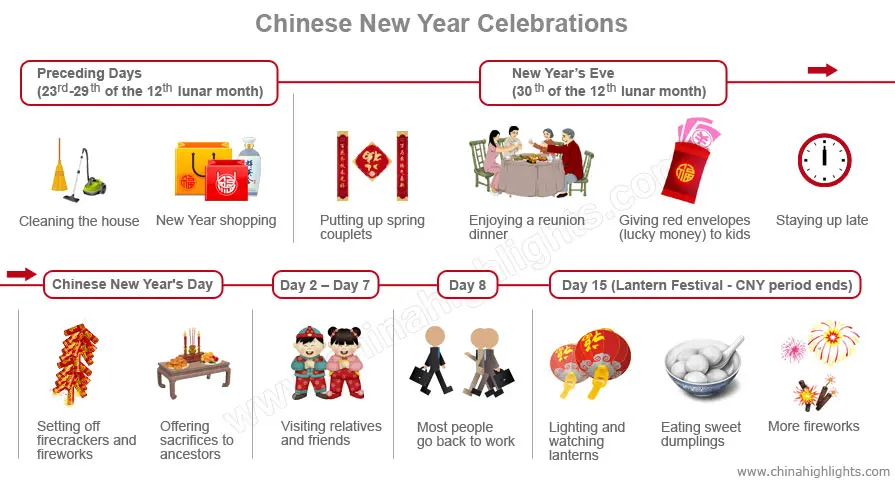
The most notable dates of the Chinese New Year 2024 are these days:Solar Date (2025)
Title
ActivitiesJan. 23rd
Little Yea…[阅读更多] - 读取更多